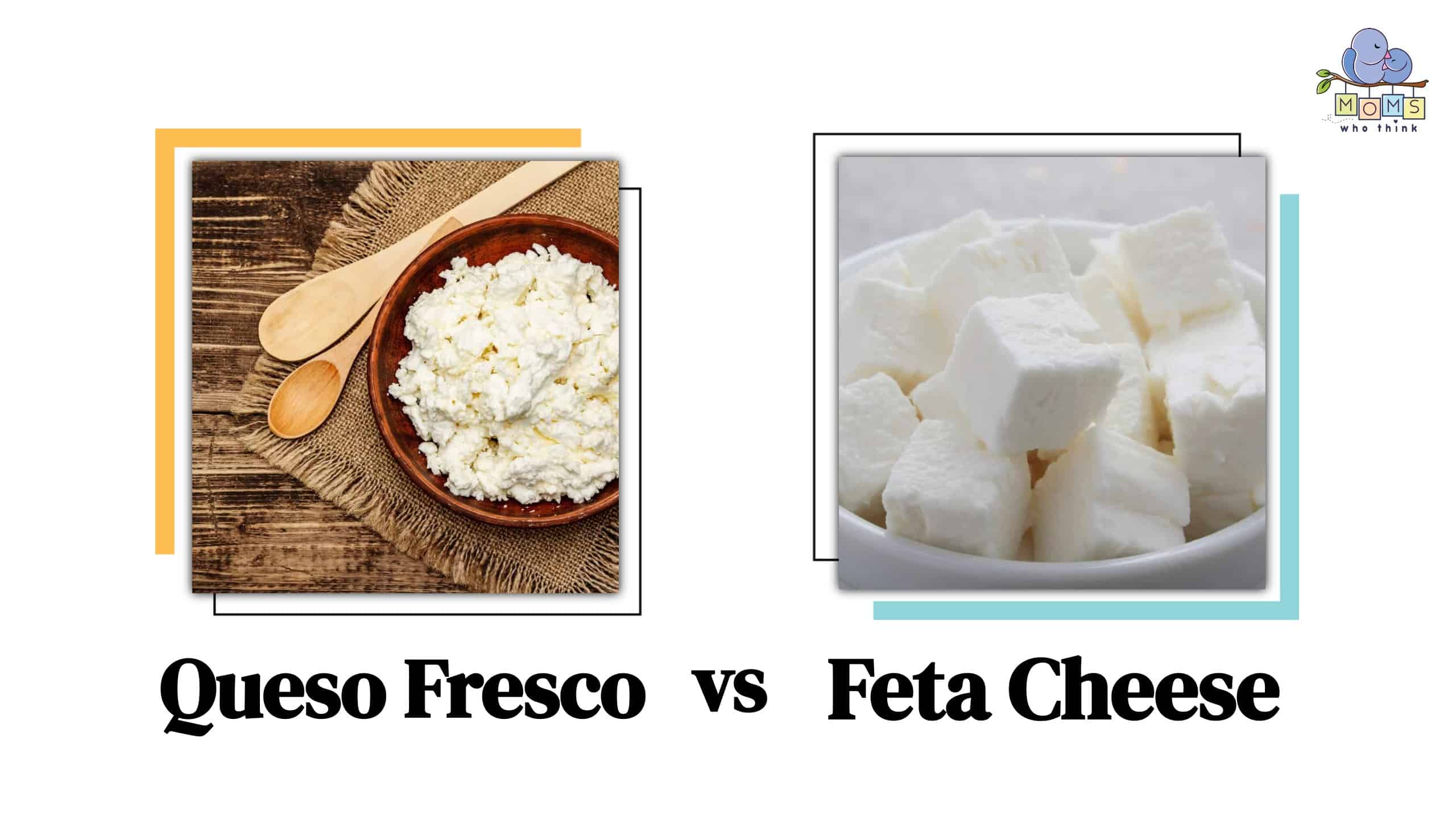Finding the right ingredients for your family meals can be a challenge. When it comes to choosing between two similar-looking cheeses like queso fresco and feta, it can be hard to know which one to use. While these two cheeses look similar, they have distinct differences in taste, texture, and flavor.
In this post, we'll take a closer look at the differences between queso fresco and feta cheese. We'll compare the characteristics, uses, and nutritional benefits of each so you can make the right choice for your next recipe without any hassle. Here's all the information you need to make an informed decision that your family will love.
Queso Fresco vs. Feta Cheese: What Is the Difference?
The key difference between queso fresco and feta cheese is their origin. While queso fresco originates from Spain and Mexico, feta cheese hails from Greece. In terms of taste and texture, both cheeses are mild, crumbly, and soft, but feta cheese can be saltier than queso fresco. Other differences include production processes and which milk is used as a key ingredient. Let's explore the differences in more detail below!
What is Queso Fresco?
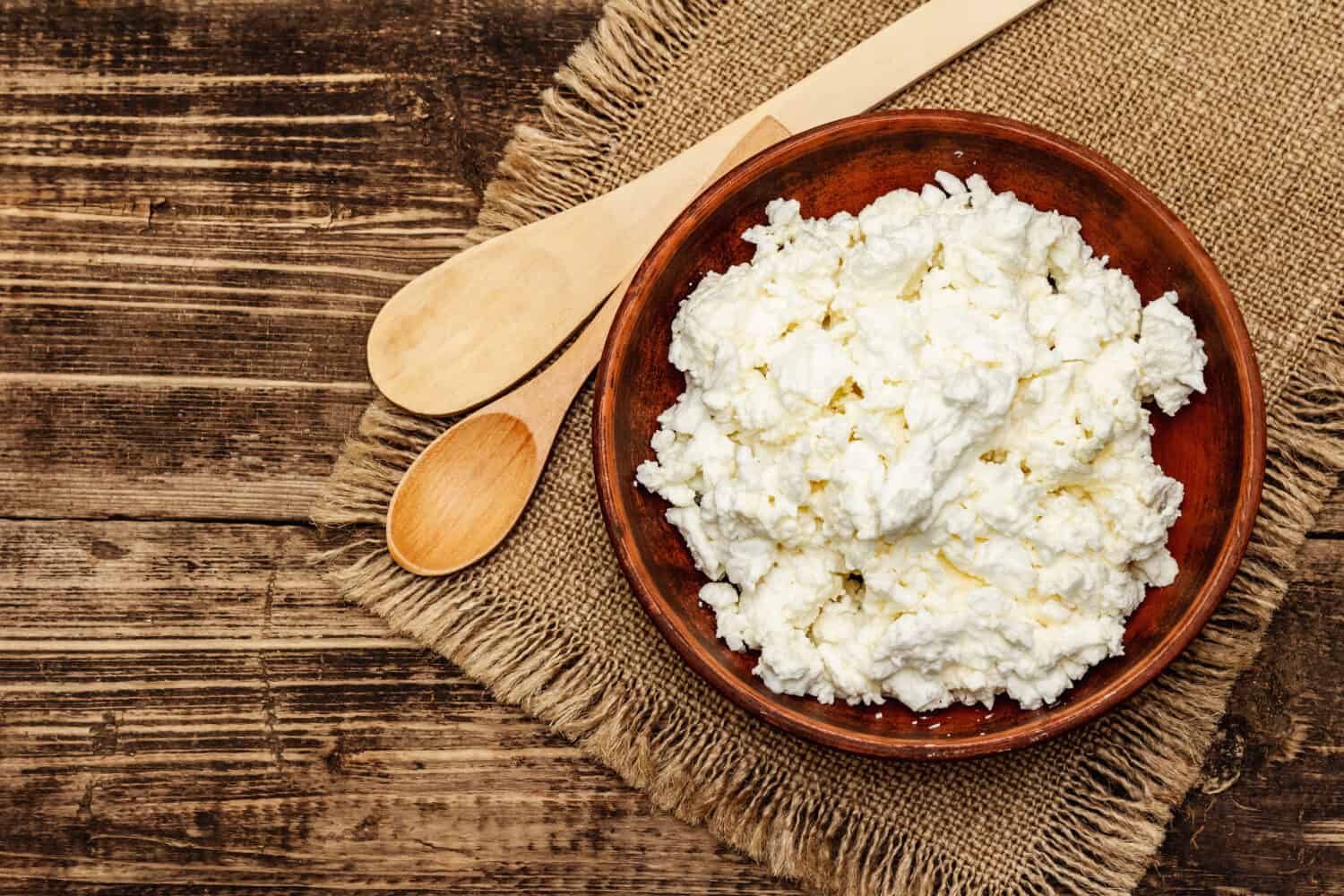
Queso fresco is a soft, white, crumbly cheese that originates from Latin America.
©Chatham172/Shutterstock.com
Queso fresco is a crumbly white cheese that is commonly used in Mexican and Central American cuisines. It's a fresh cheese that is made from cow's milk and sometimes a small amount of goat milk.
Origin
One major factor that sets queso fresco apart from feta is where it originates. Queso fresco hails from Spain and Mexico, while feta comes from Greece. Queso fresco translates to mean “fresh cheese” and was originally intended to be made and served within the same day to retain its freshness.
- The must-have convenient reference guide for every home cook!
- Includes more than 8,000 substitutions for ingredients, cookware, and techniques.
- Save time and money on by avoiding trips to grab that "missing" ingredient you don't really need.
Characteristics and Texture
Queso fresco is a fresh white cheese that is typically sold in small rounds or blocks. It has a soft, crumbly, and slightly grainy texture. Because this cheese softens slightly but doesn't fully melt, it tends to hold its shape even when cooked.
Flavor
Queso fresco has a mild and slightly tangy flavor, with a subtle saltiness. It tastes fresh and creamy and can sometimes have a mildly sour aftertaste.
Production
Traditionally, queso fresco is made by curdling milk with rennet or another acid source such as vinegar or lemon juice. In Spain and Mexico, this cheese is normally made from raw, unpasteurized cow's milk. In the U.S., pasteurized cow's milk is used to avoid potential bacteria that can come from raw, uncooked milk.
The curd that's created is then drained and shaped into small, round, or oval-shaped balls, which are then sold fresh. Keep in mind that queso fresco has a short shelf life and should be consumed within a week of opening it. This soft cheese is intended to be used fresh and won't last long, even in the fridge.
Popular Uses
Queso fresco is a versatile cheese that can be used in a variety of dishes. It's most popularly used as a topping for dishes like tacos, tostadas, and salads. It can also be crumbled and added to soups, stews, and scrambled eggs.
Because this cheese doesn't melt well and tends to hold its shape, it's best used as a topping or garnish to Mexican-style dishes.
Nutritional Value
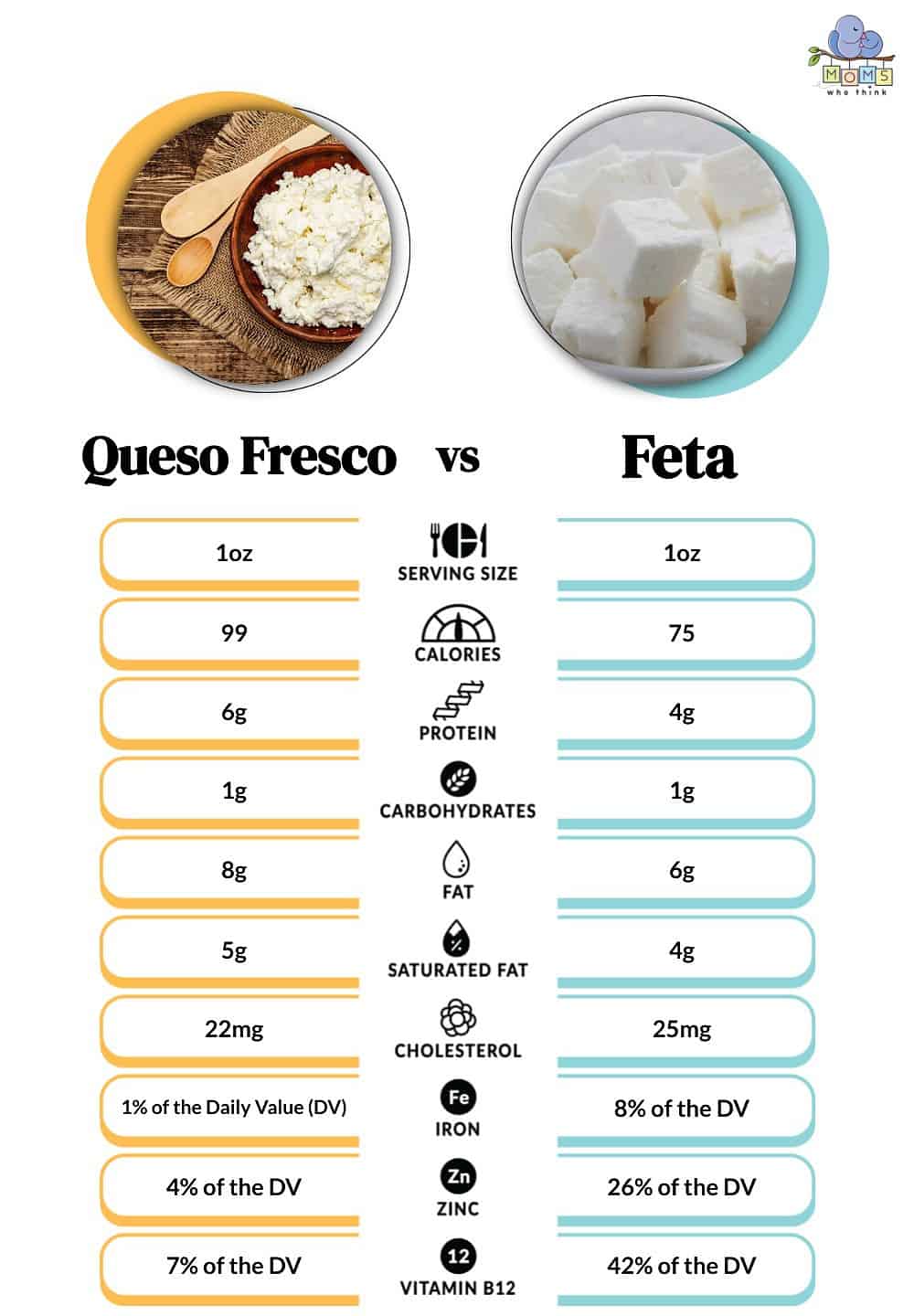
A comparison of feta and queso fresco's nutrition. It's important to note that nutritional values can vary by brand and cheese preparation.
©
From a nutritional perspective, queso fresco is a good source of protein and calcium, but it is relatively high in sodium and saturated fat. As with all cheese, it is best consumed in moderation as part of a balanced diet.
Also keep in mind that eating queso fresco made from raw, unpasteurized cow's milk can pose health risks, especially if you are pregnant or have a weakened immune system. It's best to choose queso fresco made from pasteurized and cooked milk.
What is Feta Cheese?
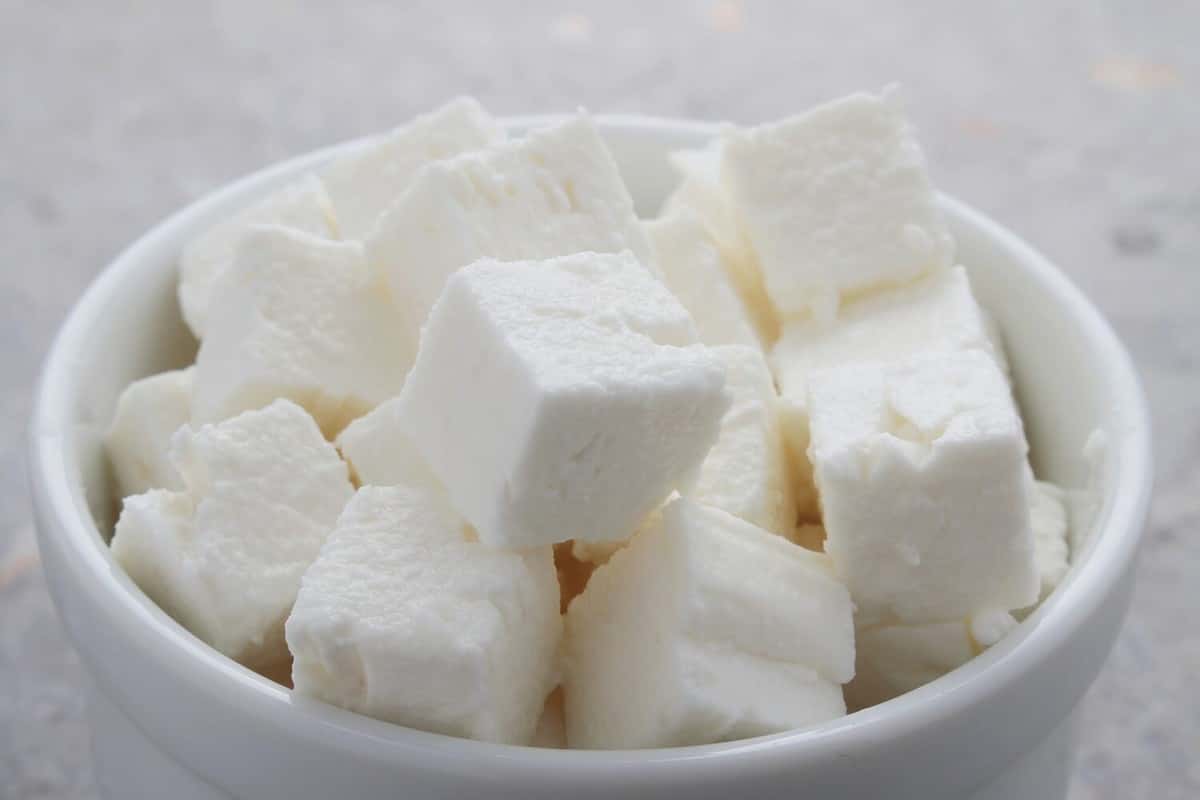
Feta cheese is also soft, white, and crumbly, but is made from goat's milk and often sold in cubes.
©Chatham172/Shutterstock.com
Feta cheese is a cheese that is primarily made from sheep's milk but can also contain a small portion of goat's milk. However, it never contains cow's milk which sets it apart from queso fresco. Feta is also placed in a brine solution which gives it its signature salty flavor.
Origin
True feta cheese originates from Greece, making it a popular cheese for Mediterranean-style dishes. However, this cheese is now manufactured all over the world, meaning it can range in texture and flavor depending on where it's produced.
Characteristics and Texture
Feta cheese is typically firm, white, and crumbly. Greek feta cheese can be difficult to spread and may have a grainy texture to it.
Other types of feta cheese can vary in texture. For instance, French feta tends to be mild and creamier, while Bulgarian feta can be slightly less salty. What kind of feta cheese you purchase and use will depend on where it's produced.
Flavor
Feta typically has a tangy, sharp, and salty flavor. The saltiness comes from the brine solution that is used for aging, and the level of saltiness will depend again on where and how the cheese is made.
Its salty flavor is one aspect that sets it apart from queso fresco, which has a milder, less salty taste.
Production
Similar to queso fresco, the process of making feta cheese starts by curdling milk with rennet. Feta's curds, however, are allowed to drain in cheesecloth for several hours. The cheese is often cut into blocks or cubes which is typically how it's sold after it's aged. Once the cheese is cut, it's placed in a brine solution made from water and salt. This solution helps to preserve the cheese and gives it its characteristic flavor and texture.
It's important to note that the aging process is one thing that truly sets queso fresco apart from feta. Queso fresco is served fresh without any aging required, while feta is aged for up to two months.
- The must-have convenient reference guide for every home cook!
- Includes more than 8,000 substitutions for ingredients, cookware, and techniques.
- Save time and money on by avoiding trips to grab that "missing" ingredient you don't really need.
Popular Uses
Feta cheese is popular for its versatility. It can be found in everything from salads and sandwiches to pasta and pies. It pairs well with a variety of ingredients, such as olives, tomatoes, and cucumbers, and is often used in Mediterranean-style cuisine.
Nutritional Value
While feta cheese still offers nutritional value like calcium and protein, it's also high in sodium and should be consumed in moderation. It does, however, offer more vitamins and minerals than queso fresco, making it a healthier option.
Can Queso Fresco and Feta Be Substituted for Each Other?
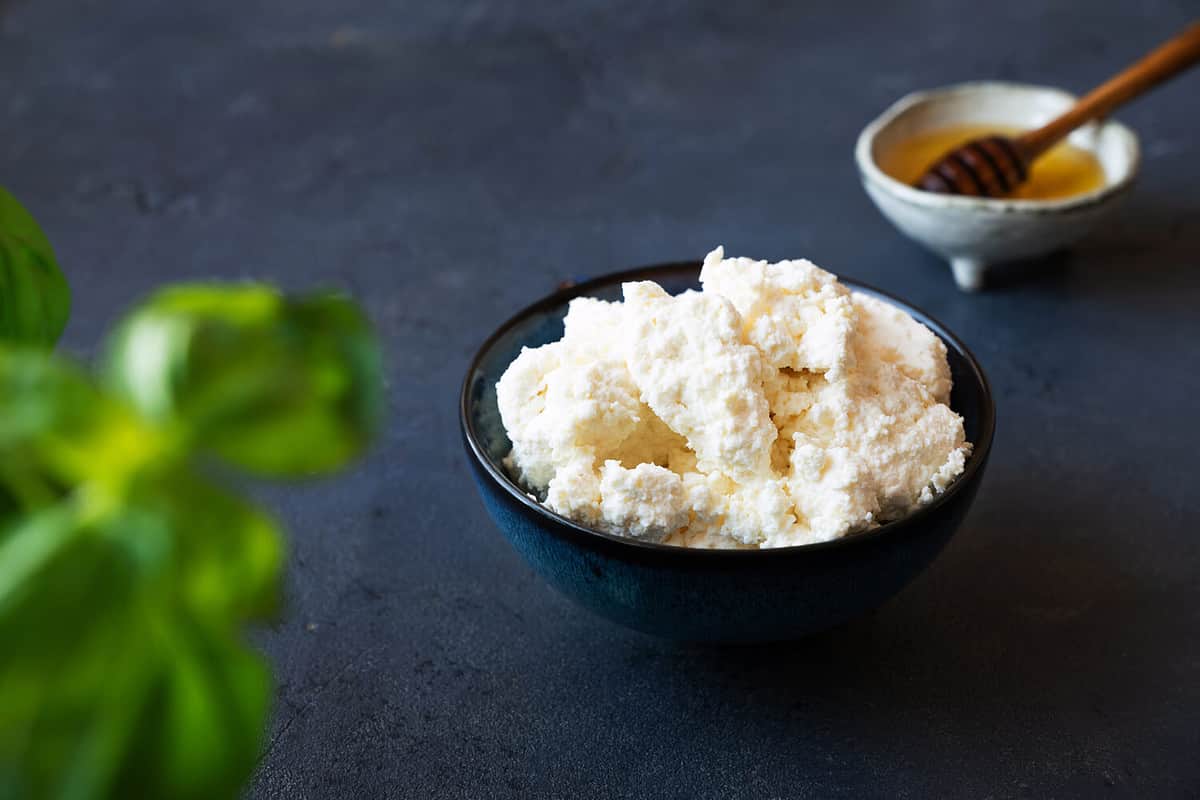
Crumbled, queso fresco and feta often look similar.
©Pedal to the Stock/Shutterstock.com
In short, yes, queso fresco and feta cheese can substitute for each other in some recipes due to their similar crumbly texture and mildness. But keep in mind that the results may not be exactly the same because these two cheeses have distinct flavors and textures that can alter the overall taste and consistency of a dish.
Additionally, if you find feta a bit too salty for your liking, queso fresco can be a good substitute that still adds flavor and creaminess to your dish.
Popular Substitutes for Queso Fresco and Feta Cheese
If you're unable to get your hands on queso fresco or feta, or simply want to try something new, here are a few substitutes you can use:
Queso Blanco
This is another Mexican-style cheese which makes it a great substitute for queso fresco. It's creamy, crumbles, and can be melted. It works well with refried beans, tacos, and salads.
Paneer
This cheese is soft, crumbly, and commonly used in Indian cuisine. It has a mild, slightly sweet flavor and a texture similar to queso fresco, so you can fully substitute the two without much flavor difference.
Farmer's Cheese
Farmer's cheese is a fresh cheese that is similar to queso fresco in texture and taste. It has a mild and slightly tangy flavor and is a regular substitute for queso fresco in Mexican cuisine.
Ricotta Salata
Ricotta Salata is a hard, crumbly cheese that is made from the whey of ricotta cheese. It has a mild, slightly salty flavor and a texture similar to queso fresco and feta, making it an excellent substitute.
Halloumi
This cheese is firm, salty, and similar in texture to feta cheese. It is common in Mediterranean cuisine, and you can grill or fry it.
Queso Fresco Recipes
Print
Pizza with Red Pepper Sauce
- Yield: Serves 6
Ingredients
Nonstick cooking spray
2 medium sweet red peppers
1 Anaheim pepper
1 tablespoon olive oil
1 clove garlic, cut up
½ teaspoon salt
½ teaspoon crushed cumin seeds
1 12-inch Italian bread shell
6 ounces coarsely shredded deli-roasted or rotisserie chicken (about 2 cups)
2 green onions, sliced
2 ounces crumbled or shredded queso fresco and/or Monterey Jack cheese (about ½ cup)
2 tablespoons dairy sour cream
¼ cup fresh cilantro leaves
1 small avocado, halved, seeded, peeled, and thinly sliced (optional)
1 serrano pepper or jalapeno pepper, thinly sliced (optional)
Instructions
1. Line a baking sheet with foil; lightly coat foil with nonstick cooking spray. Set baking sheet aside. Cut sweet peppers and Anaheim pepper in half lengthwise. Remove seeds and membranes. Place pepper halves cut side down on prepared baking sheet. Roast in a 425° oven for 20 minutes or until skins are blistered. Wrap pepper halves in foil; let stand for 10 minutes to steam. Peel and discard pepper skins. Coarsely chop peppers.
2. In a blender container or food processor bowl combine peppers, oil, garlic, salt, and cumin seeds. Cover and blend or process until smooth. (Store sauce in a covered container in the refrigerator for up to 10 days.)
3. Place bread shell on a preheated baking stone or 12-inch pizza pan. Spread with the red pepper sauce. Bake in the 425° oven for 5 minutes. Top with chicken, green onions, and cheese. Bake 5 minutes more. Top with sour cream, cilantro, and, if desired, avocado and sliced pepper.
Nutrition
- Serving Size: 1 slice
- Calories: 299
- Sodium: 642mg
- Fat: 9g
- Saturated Fat: 2g
- Carbohydrates: 38g
- Fiber: 1g
- Protein: 18g
- Cholesterol: 28mg
- Exchange ricotta cheese for queso fresco in this Arroz con Queso recipe
Feta Cheese Recipes
- Roasted Asparagus with Feta Cheese
- Feta and Spinach Lasagna Rolls
- Herb-Crusted Chicken with Feta Sauce
Final Thoughts
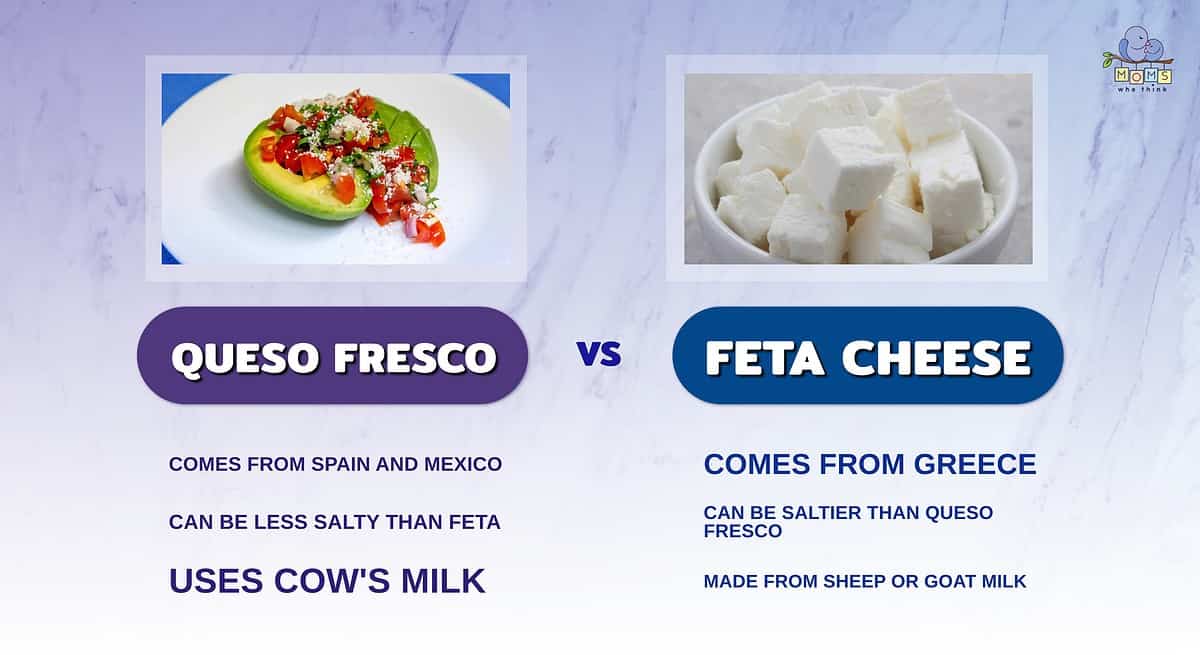
- Queso fresco, as the name might suggest, comes from Spain and Mexico. Feta cheese originates in Greece, although there are now many variations that come from across the Mediterranean.
- Feta cheese and queso fresco can be similar in taste, but queso fresco is generally less salty than feta.
- Queso fresco is made with cow's milk. Sheep milk is the most common milk used to prepare feta, but goat's milk can sometimes be used as well.
While queso fresco and feta cheese seem similar in appearance, they have distinct differences in flavor, texture, and usage. With this information in mind, you can confidently incorporate queso fresco and feta cheese into your favorite dishes, or use one of the suggested substitutes if needed. Whether you're making a salad, pasta dish, or a delicious snack, these cheeses can add an extra burst of flavor and texture that your family will love.
- The must-have convenient reference guide for every home cook!
- Includes more than 8,000 substitutions for ingredients, cookware, and techniques.
- Save time and money on by avoiding trips to grab that "missing" ingredient you don't really need.
